#60s who
Text
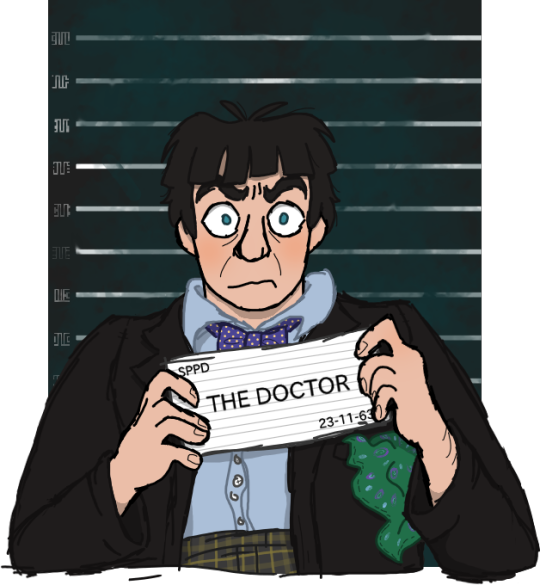
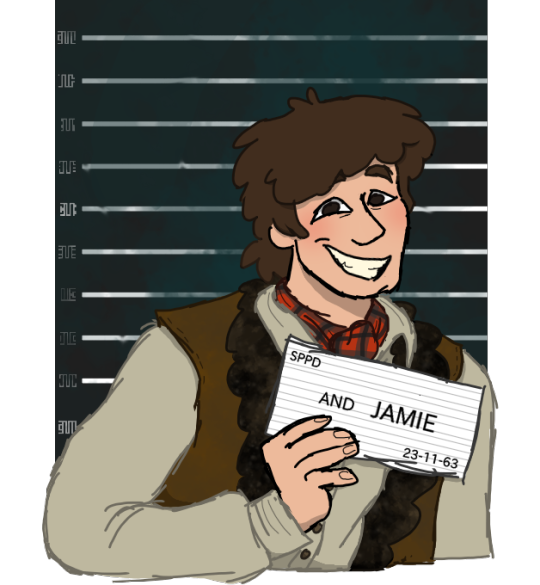
The Doctor doesn't understand how this keeps happening.
Jamie doesn't understand how he's still surprised.
///
plus a black and white version as a treat↴

#doctor who#60s who#classic who#second doctor#jamie mccrimmon#twojamie#2jamie#barbie meme#barbie#i know this is like... 7 months late. but i can do what i want forever >;P#so#twojamie mugshots be upon ye
286 notes
·
View notes
Text

Ya just don't get wild stuff like this nowadays, do ya?
Gotta love the 60s. Those guys were bonkers.
388 notes
·
View notes
Text

i love telesnaps for giving us goofy ass cartoon shit like this
301 notes
·
View notes
Text
Travelling with a 60s Doctor must stink cause not only do you have no control over where you’re going at all but you have to sleep on these horrid excuses for beds.

183 notes
·
View notes
Text
I'll never say it enough but The War Games is such a perfect story. It's really long but it's so good, I don't get any second of boredom watching it!
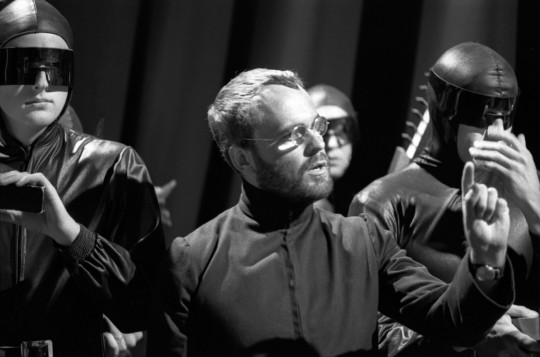
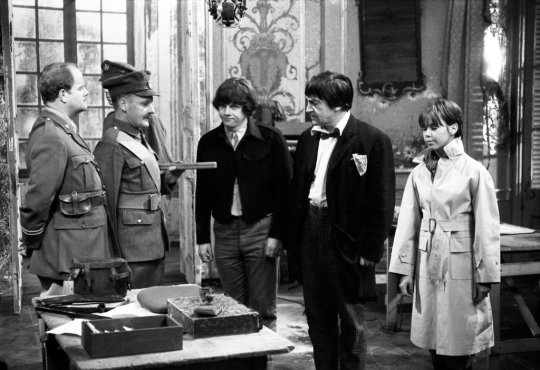
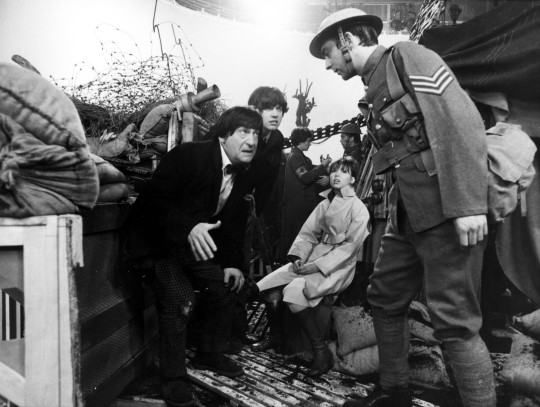


#doctor who#classic who#classic doctor who#dr who#second doctor#2nd doctor#patrick troughton#the war games#60s who#60s doctor who#zoe heriot#wendy padbury#jamie mccrimmon#frazer hines#can't get enough of this one#malcolm hulke#terrance dicks
135 notes
·
View notes
Text
Evil of the Daleks Two be like: oh, you want me to discribe Jamie?? how amazing and kind Jamie is?? how his instincts of kindness and saving a life makes him so incredible and better then a dalek??? don't mind if i fucking do! first of all-
#doctor who#dw#second doctor#60s who#jamie mccrimmon#the doctor loves him dearly#this and the “jamie do i look weird??” “I don't know#“maybe i just got used to you”f#from the first episode are so good to define their relationship#2th doctor#classic who#classic doctor who#classic who watchalong#finally finishing season 4#the evil of the daleks#evil of the daleks
140 notes
·
View notes
Text
The Killer Cats of Gin-Seng
In Survival, the last regular serial of Classic Doctor Who, the Doctor and Ace visit a planet of humanoid cats called “Cheetah People”. The Cheetah People are highly telepathic: they can mentally control and inhabit their pet cats, and they can even teleport between planets. Most notably, one of them is played by Lisa Barrowman, better known as Bernice Summerfield.
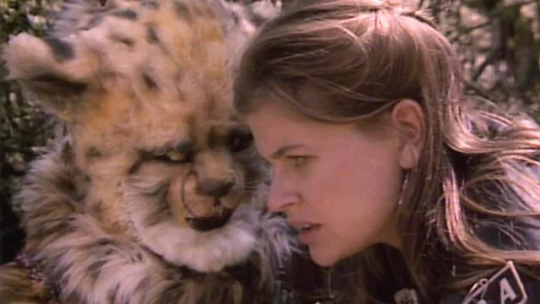
But this wasn’t actually the first time that humanoid cats had been set to appear in Doctor Who. In 1977, script editor Anthony Read commissioned his former collaborator David Weir to write the Season 15 finale, a four-part serial set on Gallifrey. The request was to explore society outside the Capitol with an emphasis on morality, a theme which Weir had written well in the past. So he pitched a story about Gallifreyan civilization of humanoid cats.
The Gallifreyan cat-people would have mirrored real-world cats’ dual penchant for both sophistication and savagery: they would appear advanced and civilized until the Doctor wound up in one of their elaborate gladiatorial displays! Weir delivered his scripts on time, and production proceeded to the point that Dee Robson designed costumes for the cat actors.

Ultimately the story was cancelled: Weir, by all accounts an excellent screenwriter, dramatically overestimated the show’s VFX capabilities and budget. But executive producer Graham Williams later mentioned the idea at a fan convention, so it became well-known in fandom (albeit under the false name The Killer Cats of Geng Singh). As a result, when Survival finally brought cat people to screens, fans naturally canonwelded the two.
One of these fans was Adrian Middleton, editor of the Apocrypha fanzine. Here’s how Apocrypha issue 1 covered the cats:
Apocrypha on the Killer Cats
THE GIANT CATS -16,000,000
The first intelligent mammalians on Gallifrey evolved from its version of the sabre-toothed Tiger. These giant cats developed a rudimentary form of empathic communication, which allowed them to influence the actions of their prey.
Over an extended period of time, the cats developed a finer telepathic ability, allowing them to actually control other species. This became a necessity as feline culture grew, as their physiological form prevented the use of tools to build or write with. Thus, in spite of their intelligence, the cats could not establish a true civilisation without anthropoid assistance.
FELINOID CIVILISATION -14,000,000
Early Gallifreyan hominids soon became the tools of feline culture. The first buildings on the planet were built by hominids but designed by cats, taking the form of vast stone arenas, in which the cats would use lesser species for sport - hunting and killing for pleasure rather than survival.
HOMINIDS -14,000,000/-13,980,000
Forced to live alongside saurian and feline predators, Gallifrey's first hominid tribes evolved as creatures of guile and stealth. Communities were established using primitive communications. These hominids were the cave-people, the tree-people, and the river-people.
THE FALL OF THE GIANT CATS -13,980,000
The hominid tribes had at first been easy prey for the cats, easily manipulated as a supply of muscle and food. Ultimately, however, the development of feline culture accelerated the development of hominid culture. Being made to use their hands and having the telepathic parts of their minds manipulated awakened a new sense of purpose within them. Seeing the cats as their slavers, they rebelled, exposing the cats to a coup so bloody that the species was all but wiped from the face of the planet.
THE LEGEND OF THE VANISHING CATS -13,800,000
It is rumoured that, after their defeat by the hominids, the giant cats fled to the mountains, where they hoped to restore their numbers (perhaps in an effort to restore their power over the hominids). Often hunting parties would venture into these mountains, bringing back the occasional cat. It seemed that the mental strength of the hominids had come to match their feline contemporaries.
Other psychic powers were attributed to the cats, including the power of teleportation. In Gallifrey's southern hemisphere, atop one of its highest mountains, there stands a crudely erected stone circle. Gallifreyan archaeologists determined that this was built by the cats themselves. Legend states that the giant cats emigrated by mass teleportation to another worlds. Few giant cats were seen from this time on, and those that did appear bore no telepathic powers. However, smaller domestic cats, or Kitlings, retained this ability.
WHY LINK THE KITLINGS FROM 'SURVIVAL' WITH THE KILLER CATS OF GALLIFREY?
The 'cat' theme is one that has been expanded on greatly in recent years. Colin Baker's cat motif and 'I am the cat that walks alone' slogan, followed by Eric Saward's novelisation of 'Slipback', set a pace followed by 'Survival' and the 'Cat's Cradle' trilogy.
Upon learning about 'The Killer Cats of Ginseng' by David Weir, everything seemed to fit into place. Cats can't exist everywhere in the universe, they have to come from somewhere - we have Earth cats, and Gallifrey has telepathic or empathic cats, just like the Kitlings.
Commentary
Since the 90s, a few stories have referenced the killer cats idea. Gary Russell’s VMA Invasion of the Cat-People mentions “mercenaries of Gin-Seng” alongside the Cheetah People in a list of felinoid species (hence the “canonical” spelling); there’s a similar offhand mention in Big Finish’s Erasure. But there’s only been one actual appearance of one of the cats: Daniel O’Mahony’s Faction Paradox short story “The Return of the King” (pdf).
“The Return of the King” is a prelude to the author’s 2008 novel Newtons Sleep. In that book there’s a glimpse of “the nocturnal delegations of the wild things, whose sharp bright teeth and claws gleamed in the dark of their robes.” The prelude elaborates,
[Time Lord Thessalia’s] oracle stays at the window, seething playfully below his hood. He has fiercely intelligent eyes, neither as sharp nor as bright as his scar. His mouth is a succulent white smile in a lightless face. His people have nothing but contempt for the rituals of the Great Houses. She’s little better than prey to him, a bloodless snack for his long teeth and hungry mind. He breathes, honeyed air purring out of the cavities of his body.
A killer cat kept as a Time Lord’s personal oracle … as @rassilon-imprimatur once noted, a funny recontextualization of The Mark of the Rani’s reference to the Lord President’s “pet cat”!
This was my first exposure to the killer cats, so I always took it for granted that they’d always had psychic or oracular abilities. But in fact, as best as I can tell, there was zero hint of this in the original serial. I tracked down every published description of the story, and they all amount to the same few repeated bits of information: Gallifrey, humanoid cats, and a gladiatorial arena. Richard Bignell ultimately told me, “No summary of Killers of the Dark exists. Even David Weir couldn’t recall anything about it when I spoke to him.”
So when “The Return of the King” features an oracular cat-man, it’s not just a reference to the unmade Classic serial. It’s a reference to fan interpretations like Middleton’s which canonweld that serial with the psychic Cheetah People.
And in some ways, it seems to be referencing Middleton’s version specifically! In “The Return of the King”, the above quoted memory is interrupted by commentary:
Your first oracle?
‘My last.’
You think? But his kind were vanishing from the world.
‘They were escaping the War. They could see it coming.’
Compare:
Legend states that the giant cats emigrated by mass teleportation to another worlds. Few giant cats were seen from this time on, and those that did appear bore no telepathic powers.
And so Middleton explains how the cats vanished in O’Mahony’s telling, and O’Mahony explains why they vanished.
Afterword
While we’re on the topic of why, why did O’Mahony choose to revive this specific idea in “The Return of the King”?
One of the places I checked for Killers of the Dark details was issue 336 of Doctor Who Magazine. Imagine how thrilled I was to find that the relevant “Accidental Tourist” piece, located one page after a Faction Paradox ad, was written by none other than O’Mahony himself!
Part of his reflection was particularly striking. He recaps the wild undefinedness of the Doctor’s backstory, a topic I’ve discussed before on this blog. But in his telling, the uncertainty extends past The War Games all the way to The Deadly Assassin.
After all, The War Games declared that “the Doctor’s people are the Time Lords”, but “who are the Time Lords?” was still left undefined. In the Time Lords’ many subsequent appearances, they were simply walking plot devices, and lore details were left to the wayside. Contradictions were rife. Who was Rassilon to Omega? Is their planet called “Gallifrey” or “Jewel”? Who or what on earth are the “First”, “Second”, and “Third Time Lord” who exiled the Doctor?
It was The Deadly Assassin which first dove into the details by featuring the Time Lords like they were any other of the show’s alien cultures. And for this, it was widely panned: “the fans had voted it the worst story of Season Fourteen and published reviews vociferously attacking its ‘betrayal’ of the Time Lords. The BBC practically disowned it, physically vandalising the master tape to placate Mary Whitehouse.” In other words, the stage was all set for a discarding of Holmes’ Time Lords.
O’Mahony writes in his conclusion,
The Deadly Assassin could have remained a one-off, its vision of the Doctor’s homeworld set at odds not just with the Gallifrey stories of the past but also those of the future. The Killer Cats of Geng Singh was the last chance to slip the leash. Williams loved the Time Lords but he had a raft of other ideas he could have put into play, not least the frustratingly deferred Guardians who were clearly intended as a new rung of the series cosmology above and beyond the Time Lords. The premise of Killer Cats was also to counterpoint the Time Lords with another Gallifreyan species – a race of humanoid cats that delighted in bloodthirsty gladiatorial contests alongside a highly refined culture. This wasn’t cribbing from The Deadly Assassin, this was building something new that would expand the newly-forged mythology of the series. In fact, with the cat-people on board and the Guardians waiting in the wings, the possibilities for Time Lord mythology were fluid. It might be possible to return to Gallifrey and find something new and exciting each time, different Gallifreys, with a mutable and ever-expanding history.
However, thanks to Killers of the Dark’s cancellation, Williams and Read were left with a slot to fill on short notice, and for The Invasion of Time they ultimately turned back to Holmes’ ideas. The Deadly Assassin wasn’t discarded or undermined, it was reentrenched.
This was the real moment that the Time Lords as we know them were crystallized: a real-world anchoring of the thread. This was when the whimsically-named planet “Gallifrey” definitively transformed into the rationalistic, stagnant, bureaucratic Homeworld that would feature in the Faction Paradox series.
Because in FP, by the time Grandfather Paradox enters the scene, the Great Houses are total strangers to whismy. It’s only through the course of the War that their understanding of the cosmos is broadened and stranger things begin to return to the Homeworld (with great vengeance).
By showing us a cat in the flesh, O’Mahony is finishing the housekeeping: just as the Intuitive Revelation banished the Pythia, the Eremites, and the Carnival Queen; just as the Grey Eminence unwrote Gallifrey’s first childbirth; and just as the Eternals “despaired of this reality, and fled their hallowed halls” at first hint of conflict – the Killer Cats have to leave to set the scene for the War to come.
P.S.
In Baker’s End, Tom Baker wound up “the King of Cats”. What does this imply about the Other?!?
#Doctor Who Apocrypha#the return of the king#daniel o'mahony#archival#effortpost#newtons sleep#60s who#for archival purposes#only#no copyright infringement intended#will remove upon request#baker's end#the deadly assassin#killer cats of gin-seng#the invasion of time#fourth doctor#survival#faction paradox
41 notes
·
View notes
Text
I.M. Foreman's bottling, in the pre-War version of reality, created Peter Cushing's Dr. Who
In the BBC Eighth Doctor Adventures novel Interference (1999, by Lawrence Miles), in the parts named What Happened On Dust & Foreman's World, the ancient Gallifreyan known as (I.M.) Foreman created a bottle universe. Within the Virgin New Adventures novel Dead Romance (1999, Lawrence Miles) it was revealed* that this "bottle universe" contained the continuity of the Virgin New Adventures, featuring the Seventh Doctor, and so as the BBC Eighth Doctor Adventures seemed to lack a lot of the Virgin New Adventures's continuity, it is reasonable conjecture to suggest that it was Foreman's "bottling" which removed the Virgin New Adventures from the main universe.
However, Foreman's decision to build the bottle was heavily influenced by the presence of Faction Paradox from the War, and hence these events must have occured differently before the War.
What major piece of lore was underlying in 60s Who, which later disappeared? Why, the Doctor's human origin, him building Tardis, and his name being Dr. Who, of course! None of these was concrete, but it was never previously solidly established he was a Time Lord until The War Games.
I started making this post months ago and want to post it now, so yeah - I'm saying that the pre-War bottling removed the human origin from the War, and hence I'm also saying that the Third Doctor had a possible human (or at least, non-Time Lord) origin.
26 notes
·
View notes
Text
12 notes
·
View notes
Text

Ian: 'Doctor, we've got our clothes on!'
'Well, I should hope so, dear boy. I should hope so!'
#The Space Museum#Doctor Who#Doctor Who Fandom#Ian Chesterton#60s Who#Vicki Pallister#TARDIS#Quotes#Barbara Wright
16 notes
·
View notes
Text
#lesbian#sapphic#lesbian love#sapphic love#queer love#lesbians#women loving women#wlw#women who love women#queer women#girls who like girls#girls kissing girls#girls kissing#gay girls#lez girls#lgbt#lgbtq#bisexual#pansexual#queer#girls who love girls#lesbian goals#girls with girls#girls do it better#lesbian kiss#lesbian kisses#girls who kiss girls#girls loving girls#love is love#60 fps
8K notes
·
View notes
Text

i call this "oh no! i've done it wrong!" because i couldn't get jamie's face right for the life of me lol
#doctor who#60s who#classic who#second doctor#jamie mccrimmon#twojamie#because.. well. yeah <3#i love them your honor#seriously though. why is jamie's face so hard to draw#well practice makes perfect. probably#and i definitely intend to draw them more#maybe even with colour next time
68 notes
·
View notes
Text
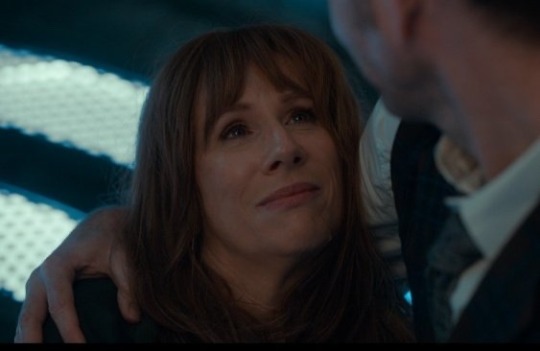

let me tell you I DIED
#I’m not even joking#I’m not okay right now#doctor who#donna noble#fourteenth doctor#Doctor who 60#the star beast
7K notes
·
View notes
Text

his figure is just so adorable like i just desperately need to give him a hug i bet he's so warm and cuddly and i bet that sweater and the kilt are so soft and cozy and hes just so cute i cant stand it
72 notes
·
View notes
Text
The Doctor: “What do I look like my dear?”
Dodo: “Oh, you’re really with it now, Doctor!”
The Doctor: “Yes, with what, my dear?”
He really said “based? Based on what?” 😭
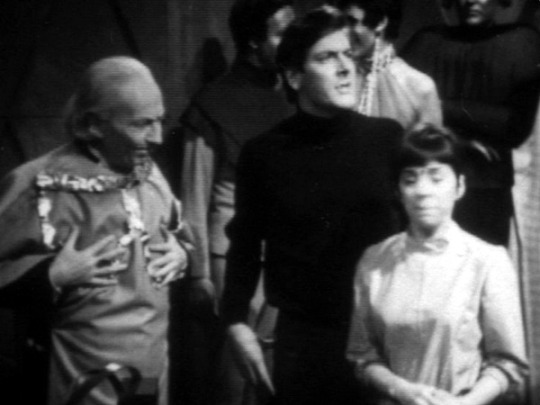
#doctor who#classic doctor who#classic who#60s who#first doctor#the first doctor#1st doctor#dodo chaplet#dodo doctor who#steven taylor
86 notes
·
View notes
Text
just had an absolutely sickening conversation with a 20 year old I work with wherein I had to impress upon her that her and her friends need to be extremely cautious going to the gay clubs right now with increasing attacks happening. make sure any very young, very newly adult queer people in your life know that we're a family and community and part of that is being willing to fight for your siblings lives if they're under attack. even if it's a person you despise, you stick up for your family and they will stick up for you. we are all we have. the cops refuse to help, and so do most people outside the community. we cannot survive without each other
#go in groups! leave before closing! bring something that can be thrown at someone! park close!#heart breaking#i dont wanna talk to the 18 year olds coming for the first time excited to have fun about how they have to be on guard at all times#i want kids who are just blossoming into the adults theyre going to be to have a safe place to feel loved and nurtured#im only 23 for christs sake#why am I having to talk to a 20 year old like im their 60 year old grandparent#i just want to feel safe with my community in what is essentially the family home
24K notes
·
View notes